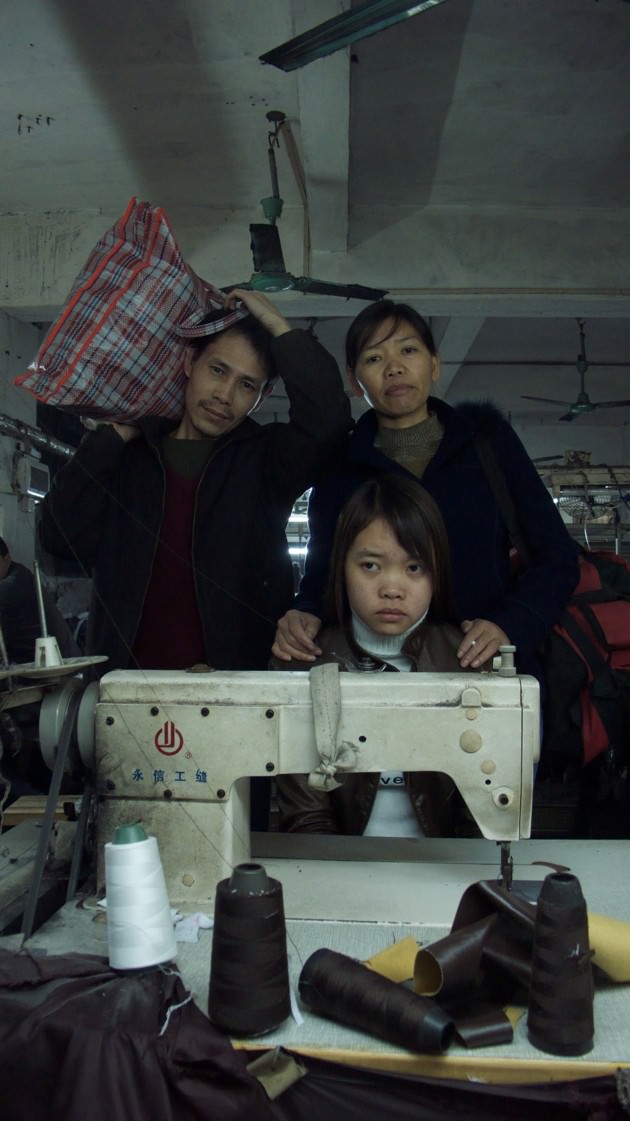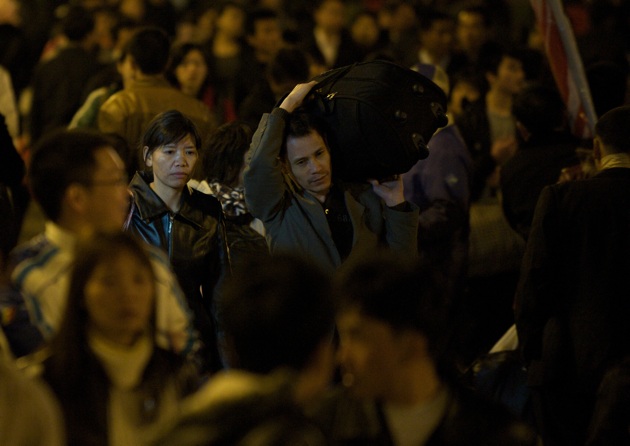At the beginning of September, a Beijing criminal court announced a decision that called attention to the difficult and sometimes tragic circumstances of millions of migrant workers in China who have left their countryside homes to work for low wages under deplorable circumstances in the cities. The court gave a three-year jail sentence to a man who ran an unlicensed, low-cost kindergarten for the children of these migrant workers. He was found to have left a group of such children without supervision in a locked room. A fire started. Eight of the children were saved by the owner of the building who, providentially, happened by at just that moment to collect unpaid rent, but one died.
There are an estimated 130 million nung-gong, or peasant workers, in China, making up what Lixin Fan, in his powerful documentary Last Train Home calls “the world’s largest human migration.” Part of Lixin Fan’s accomplishment is that he was able to capture this phenomenon on film in a country that doesn’t like the dark side of its economic success to be publicized, in China or abroad. And clearly, these migrants have suffered in countless ways, particularly from the rule that ostensibly bans them from bringing their children to their places of supposedly temporary residence—usually factory towns in China’s special economic zones where the country’s booming export industries are situated. (In fact, as Last Train Home shows—in scenes of children sleeping as their parents work on nearby sewing machines—this rule is at least sometimes violated.)
This was not the case for the husband and wife, Zhang Changhua and Chen Suqin, at the center of Fan’s film, which has been awarded numerous prizes at film festivals around the world, and has even had some limited, small showings in China. The film covers three years in the lives of Zhang and Chen who sixteen years earlier had moved from their impoverished village in Sichuan Province to work in a clothing factory in Guangzhou, near Hong Kong, leaving their two children to be brought up by a grandmother back home. “I know I haven’t been a good mom,” Chen says of this situation, “but I have to do what I have to do.” And what both Zhang and Chen do is spend long hours stitching clothing in a small workshop in Guangzhou, living in a tiny, shabby room in a cement housing block, and sending the lion’s share of their earnings home to Sichuan in the hope that their children will have better lives than theirs. Fan gives no details about their salaries, but evidently whatever they earn is more than they would get if they stayed in the countryside, which is why virtually all the working-age inhabitants of their Sichuanese village have left.
Last Train Home opens with Zhang and Chen’s desperate struggle to get train tickets so they can spend the Chinese New Year—the most important holiday of the year—with their children, whose village is 1,400 miles to the northwest. They finally succeed in this, but the effort to obtain tickets and the two-day train ride home produces many scenes that convey the logistical nightmare that China is for those tens of millions of poor workers. They live in what amounts to permanent displacement, devoid of any kind of social protections—unemployment compensation, minimum wages, pensions, or health insurance—while their children in most cases grow up without them.
The crowds at the Guangzhou station are vast; there is near pandemonium as the throngs push their way onto crowded trains. Police have to be called in to try to manage the near chaos when hundreds of thousands of would-be travelers are stranded there because of a snowstorm someplace down the line. This is a China far from the Norman Foster–designed airports, Olympic Villages, flashy shopping malls, and gated communities enjoyed by the country’s burgeoning middle and upper classes. And when Fan’s migrant couple does finally arrive in their village, their strangeness to their own children is poignant and striking. Qin, the couple’s teen-age daughter, is a Shakespearean serpent’s tooth to her parents. Surly and uncomprehending of their sacrifice, she ignores their entreaties to stay in school and, seventeen years old, goes to the city to become a migrant worker herself.
Lixin Fan, the film’s director, is a former television reporter in China, where, as he has put it in the press, “I was constantly consternated and often grieved by the shocking poverty and misery across the country’s vast rural land, submerged under the glamour of the modern metropolis.” He emigrated to Canada in 2006 and there was able to find financial backing to make his documentary, something that would have been impossible had he remained in China. Still, the mere fact that he and at least one other cameraman were able to film the conditions of this family of migrant workers for three years—inside their factory, in their room, on endless lines at train stations—demonstrates the degree to which China has opened up to critical scrutiny.
Advertisement
During the last decade, other documentary films that contradict the glowing images favored by the Ministry of Propaganda have been made in China. Perhaps the pioneer in this sense is a bearded former air force officer named Hu Jie who spent several years doggedly making a documentary called In Search of Lin Zhao’s Soul about a young female poet and defiant free spirit who was executed in 1966 for refusing to confess to ideological crimes she’d supposedly committed a decade earlier. Hu has managed to show the film to many small groups in China, though it’s a safe bet that the vast majority of people in the country have never heard of it.
More recently, a six-hour film called Karamay has gained an underground following in China. Made by Xu Xin, the film uses interviews and video footage to recount the story of an auditorium fire in 1994 in a village in the Xinjiang Uighur Autonomous Region in which 355 people, including 288 children, died. The incident has long been notorious because when the fire broke out, a leader reportedly took the microphone to order everybody to stay in their seats so that Communist Party officials could exit first—a sort of privilege of power that the central leadership doesn’t want to publicize.
“Making documentaries isn’t much of a problem now,” a journalist friend told me in Beijing recently. “It’s getting them shown that’s hard.” One reason for this is that documentaries in general, even ones that the regime might favor, are almost never shown in commercial theaters in China, and in any case a film about the everyday plight of working class Chinese would likely not have mass appeal among the more affluent, movie-watching public in places like Beijing and Shanghai. Last Train Home isn’t going to enter into public awareness on a large enough scale to threaten the regime. Yet it is not exactly banned in China either, where, like other officially unapproved documentaries, it is being shown to audiences at small venues like university film departments, artists’ colonies, and even private homes.
Some of the more independent Chinese newspapers have carried reports on the film, and the small showings have generated a good deal of online commentary. Most of the blog posts seem favorable, crediting Fan with having exposed the tragic and, to China’s middle class, largely invisible side of an economy fueled by low-cost labor. “The film portrays the people at the bottom of this society, the ones who have to sacrifice their families in order to participate in the big economic trend,” one blogger, identifying himself as Spring Stone wrote. “Unfortunately in China we can’t get access to this kind of film using official channels, because the real China is supposed to be harmonious everywhere. Our great, rich country is not supposed to have this kind of misery.”
Last Train Home is playing at the IFC Film Center in New York and will be shown in theaters throughout the US this fall.




